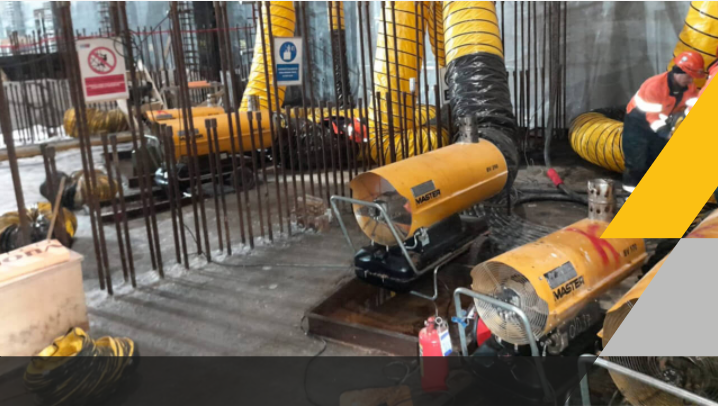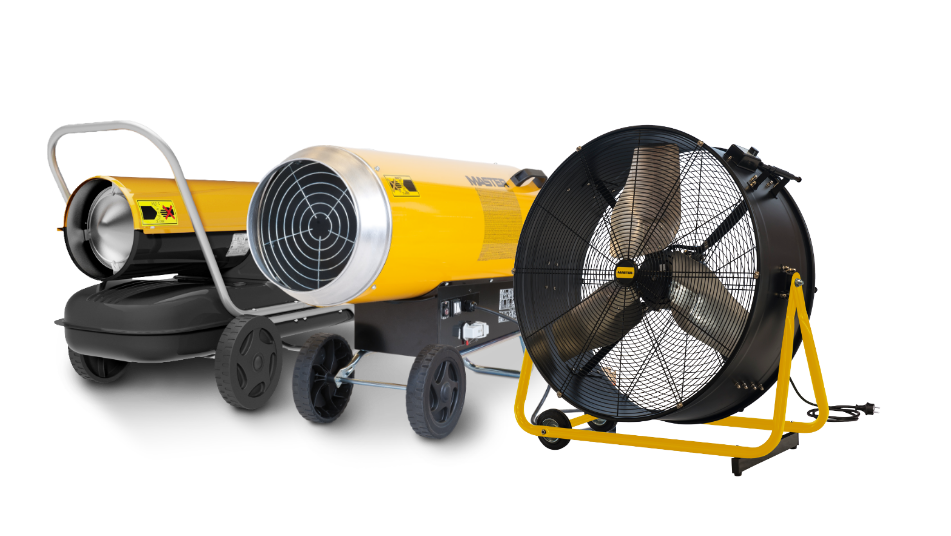Having the best technology available and the expertise to offer advice on selecting the right system are two key selling points for construction and water damage restoration professionals in need of temporary heating solutions. Ensuring your rental company is in a position to deliver both starts with having a good understanding of how heating is used in each industry:
- Construction
For effective climate control in the challenging conditions of a construction site, a heating unit should go beyond the basic function of raising the ambient
temperature.
As well as being durable, portable and energy-efficient, temporary heaters for construction sites need to be capable and effective in many different scenarios. You will find purpose-designed heating solutions doing everything from providing warmth to staff working outdoors all winter, to speeding up delicate drying processes in enclosed spaces. - Water damage restoration
The effects of flooding and water damage are devastating to any building. Acting fast with the right equipment can bring homes and properties back from the brink of irreparable damage and prevent ongoing problems such as mould and mildew. Temporary heating, most often combined with high-performance condensation dehummidifier or desiccant dehumidifier solutions, is a critical component of this restoration process, whether it’s relatively minor (but potentially dangerous) localised damage such as radiator leaks, or widespread flooding.
Portable heaters that could be missing from your inventory
There are many different types of temporary heating solutions available, each with specific benefits for particular tasks. The list below contains five of the most widely used systems in construction and water damage restoration.
- Indirect fired heaters
Delivering large volumes of clean, dry and 100% fume-free air, indirect oil-fired heaters are ideal for warming large areas with limited ventilation. Positioned outside a building or working area, they can be fitted with flexible hoses to evenly flow warm air throughout a space. - Direct fired heaters
For open, well-ventilated areas, such as large construction sites, direct oil-fired and gas-fired heaters focus a powerful stream of warm air to provide an instant supply of heat where it’s needed most. - Electric fan heaters
Widely used for their efficiency and practicality in a variety of situations, electric fan heaters are a fast, clean and safe way to warm a space. Portable and easy to use, they are ideal for temporary or emergency heating requirements. - Infrared oil heaters
Because of their ability to provide fast and focused heating with no air movement, infrared heaters are suitable for paint drying, defrosting machinery or pipelines, and heating working areas where a dust-free environment is essential. - Infrared electric heaters
For speeding up drying processes and warming up staff working on-site, infrared electric heaters are a clean and safe way to directly warm objects and people, instead of just the air that surrounds a space.
To learn more about portable heating for rental companies, and how you can meet the modern-day requirements of the construction and water damage restoration industry, get in touch with our team of experts via the form below.


